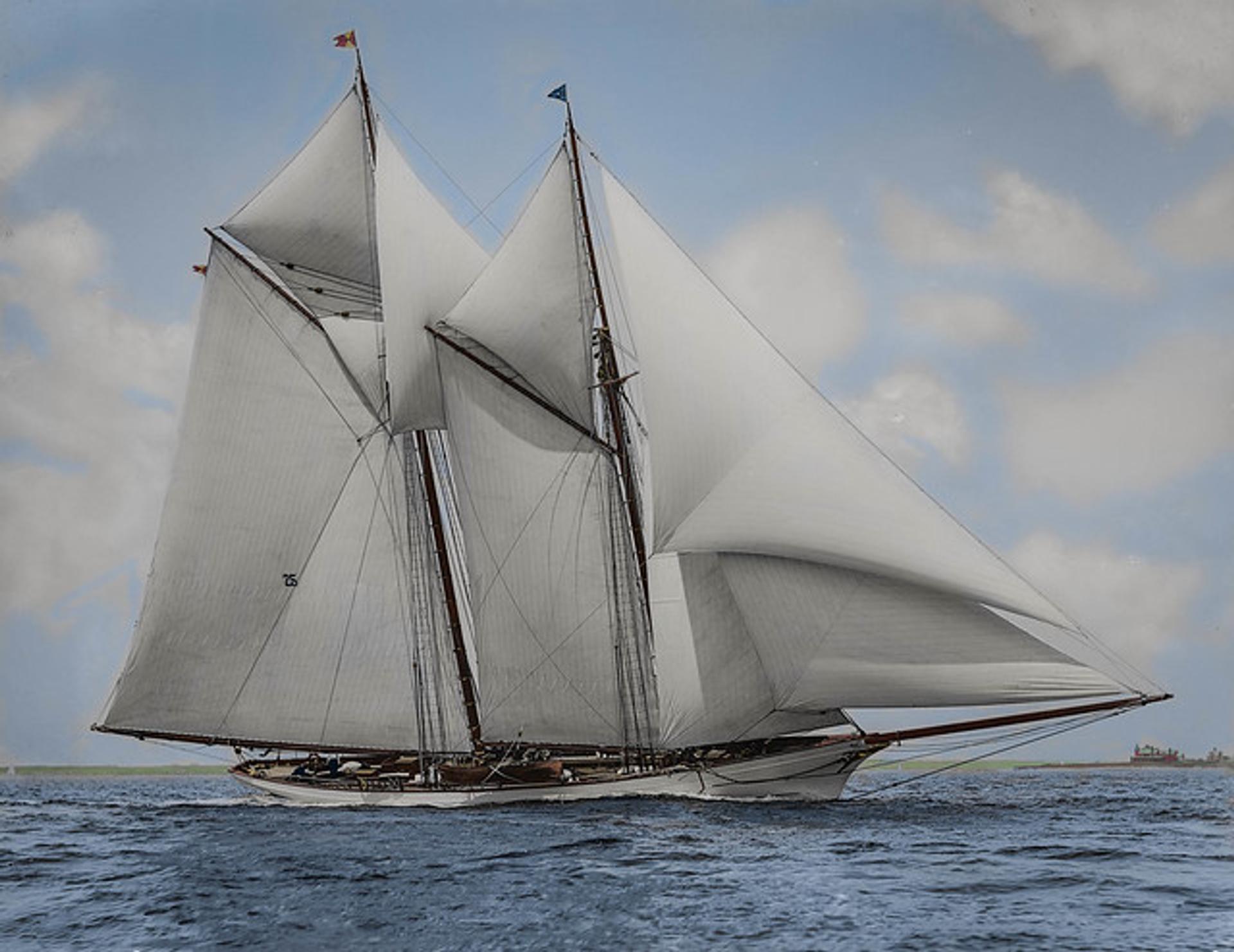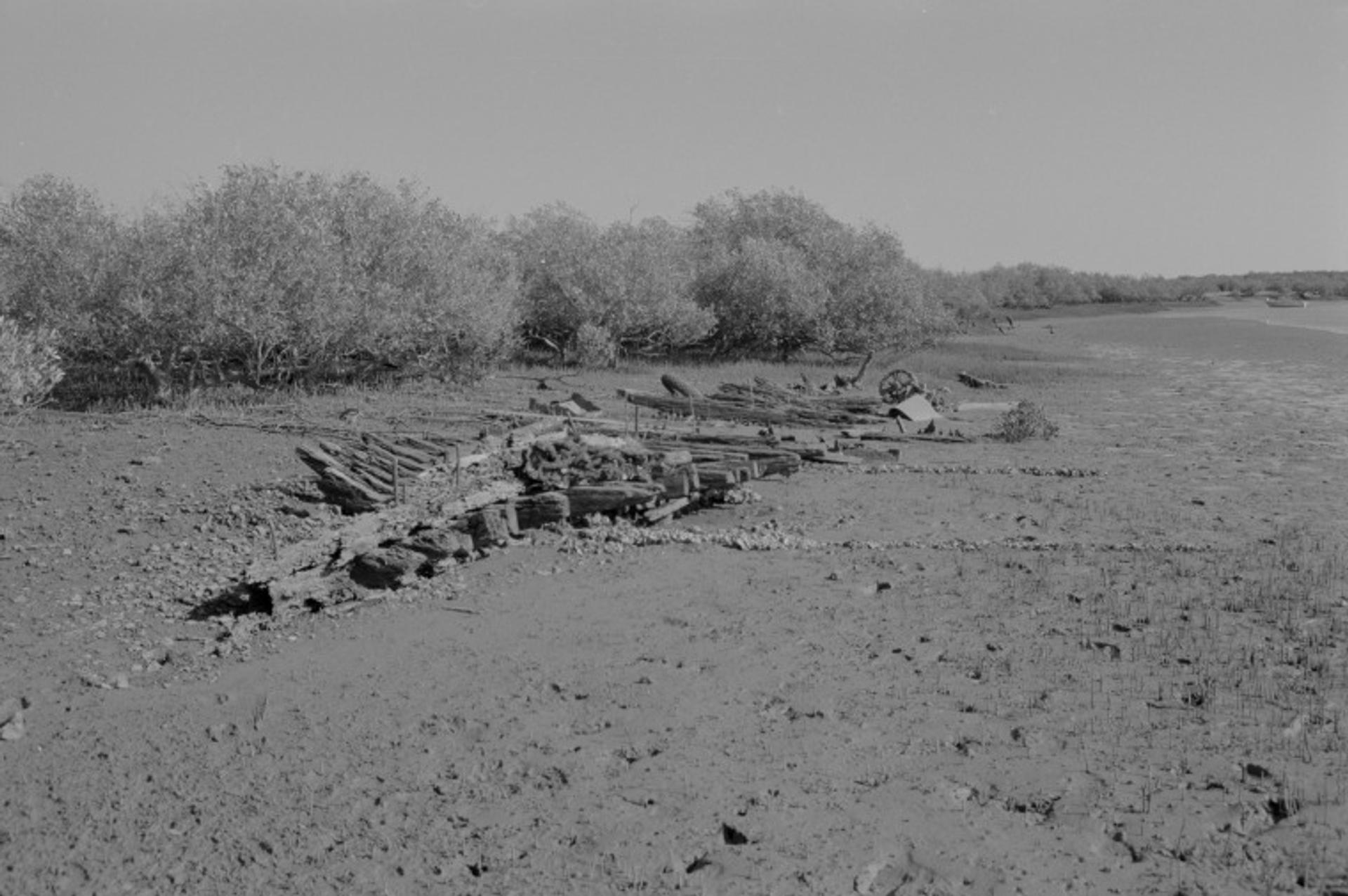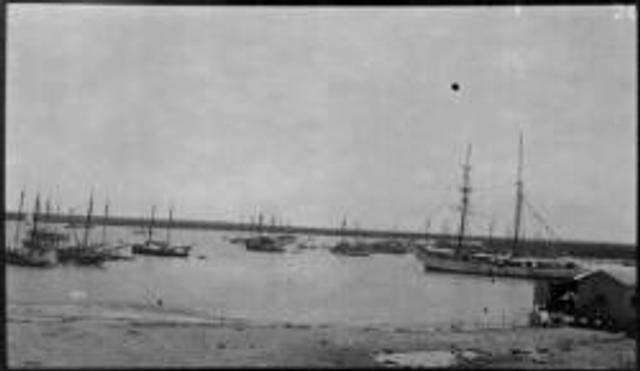Hanoe Boloe
Vessel Name: Merlin
Hanoe Boloe
Died aboard the Merlin; body recovered
14 April 1914

Merlin

Balla Balla landing - photo form State Library

Depuch Island anchorage, photo from National Library
The Merlin was a trim 67.89 ton schooner that plied the WA coast. She had two masts and wore gaff rigging, which gave her a jaunty look. She was used for racing as well as trade, and she held records for the shortest voyagers to the northwest pearling grounds as well as line honours in formal and social races. She worked the west coast with her partner boat the Geraldton.
Merlin was built in New South Wales in 1897. She was registered in WA as no. 8 of 1898. Her official number was 106138. She measured 80.2 feet in length [24.45 metres], 26 feet across her beam [7.9 metres] and drew 6.9 feet of water [2.1 metres].She was initially owned by John Mousatell of Condon, but was soon sold to a small conglomerate of men, trading as the Westward Pearling Co.
Merlin operated with six crew members. Under the command of Master S Breslin from 1900 were the mate C McKenzie, crew members Vassie, Omah, Patricio Maldo, the cook Oolah and the boat’s boy J Tiffany. At that time, Merlin traded all the way through the pearl grounds to the settlement at Condon. Due to her speed and flexibility she proved to be a useful vessel along the WA coast. J Tiffany stepped up when Captain McKenzie (the former mate) was kicked by a horse in July 1900, and Mr Tiffany took charge of Merlin (being the only other European aboard) and took the injured Captain to Cossack, and then onto Roebourne for medical attention.
Life was hard aboard the coastal tramps. They rarely stopped anywhere longer than it took to load, offload and pick up provisions. Pearling schooners fared no better. While the luggers went to layup creeks in the spring, their schooners re-provisioned, delivered shell and pearls and were chartered for other tasks. In 1908 14 of the crew of the Nelly were arrested; one had a warrant outstanding, and 13 were illegally in WA. They were tried at Port Hedland on 4 January 1900, and 12 were ordered back to work under Captain Wallace. They refused and were sentenced to three months imprisonment with the other two men. When they refused to walk to Cossack, Constables Winter and Adams engaged the Merlin to take them there, en route to Roebourne prison.
On 9 December 1908 Merlin was caught in a storm at Condon. The barometer dropped to 29.39 in a short time, and cyclonic winds blew. Merlin’s owners Mr W Banger, pearler Mr McDaniels and Captain James Irvine were aboard. They ran into Condon Creek at Condon with four of her luggers and narrowly escaped disaster. The group lost only the Seagull. Merlin was not unscathed. She lost both her anchors and spent 10 hours running in front of the storm under bare poles (no sail open) before finding sanctuary.
On 17 December 1908 a pearl which came up in a shell on the Merlin was found in possession of W.H. Collins in Port Hedland, who claimed he paid £8 4s for it. The pearl was worth £20. It was traced back to two men aboard Merlin: one Chinese and one Japanese. The buyer of the pearl was sentenced to two months imprisonment with hard labour or a £20 fine, and an order made for the money paid to be returned to the crew members who sold it. The pearl was returned to the Westward Pearling Co.
Hanoe Boloe was born in Timor-Leste in 1894. He became a member of the Merlin’s crew soon after the above events. It is likely he went on board at 14 years to be the boat’s boy when J Tiffany was promoted. Records show that Hanoe had lived with his mother in Australia. There seems to be no other family, which would have made his wages essential for them.
Relationships between the Timorese and European pearlers was frayed, and to avoid open violence pearling boats headed west to Darwin and the WA pearl fields, taking their Timorese crew members with them. Timorese divers and tenders were another source of effective but cheap labour.
Scant information is available about Hanoe’s death aboard the Merlin. It was not unusual for crew members to die from disease, especially in the tropical climates of the northwest. There was a consistent problem with mosquitoes, rats and cockroaches aboard pearling fleet vessels, which served to carry tropical diseases.Convict and transport ships from Europe brought diseases as well, like small pox and pneumonia, which could ravaged the fleets. Crews were prone to diseases such as beri beri due to poor diet and hygiene aboard the boats.
When cockroaches reached plague proportions aboard boats the crews poured tar oil and kerosene (or cyanide/sulphuric acid) in cracks in the wooden vessels. In layup times boats were anchored and all their stopcocks removed during a low tide. The water flushed out the cockroaches and rats which were washed away with the rising tide.
Hanoe Boloe died on board Merlin on 14 April 1914 when the boat was collecting shell from the pearl grounds at Depuch Island. He was 20 years old. Hanoe appears to have been a valued crew member as he was taken to the small Balla Balla cemetery and buried there.
The Merlin went on to escape several storms and incidents at sea. In 1916 she was still a boat well-regarded and called upon when needed. She was sold by Mr Banger to Captain Neilsen, who took command of her.
